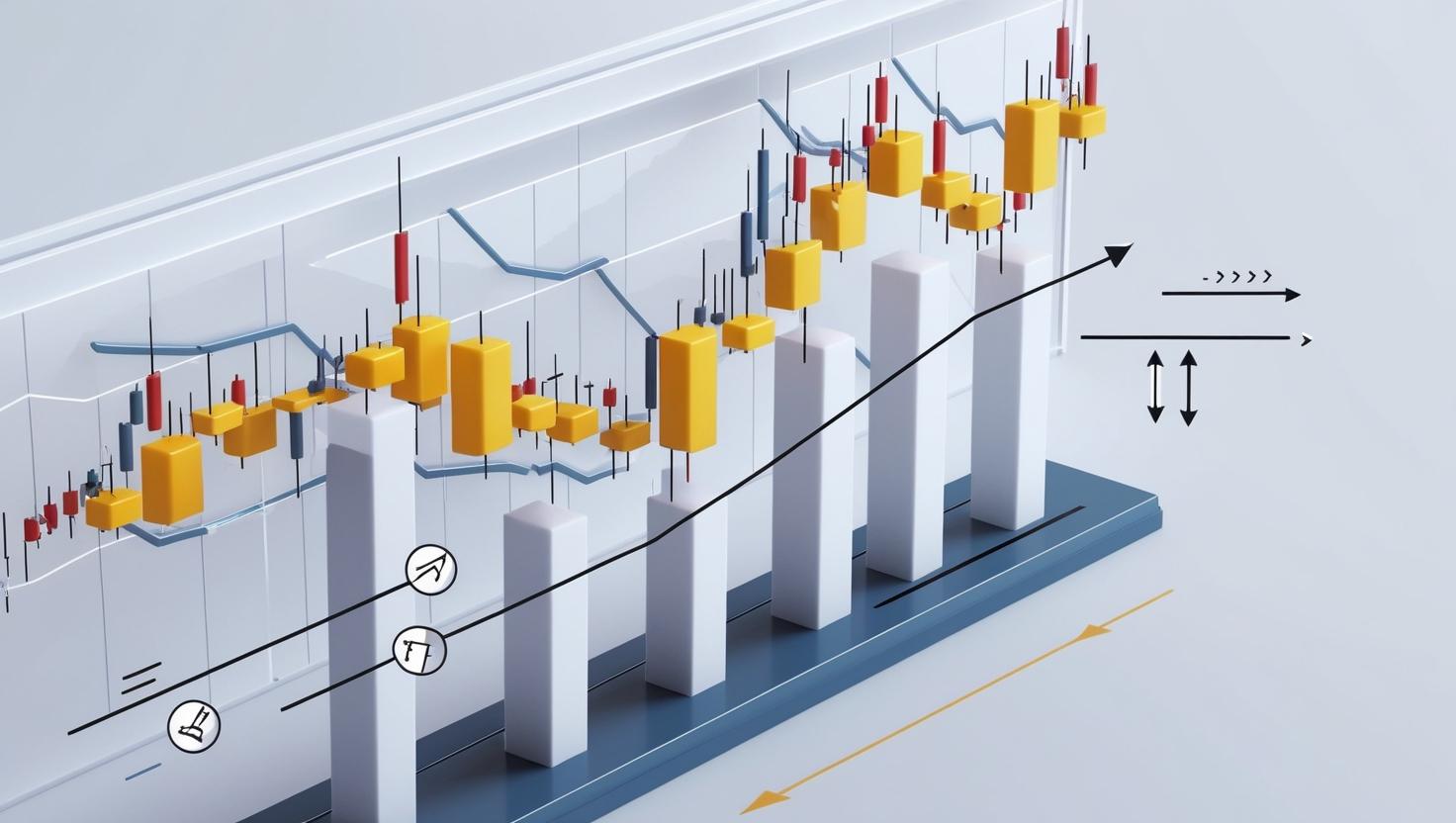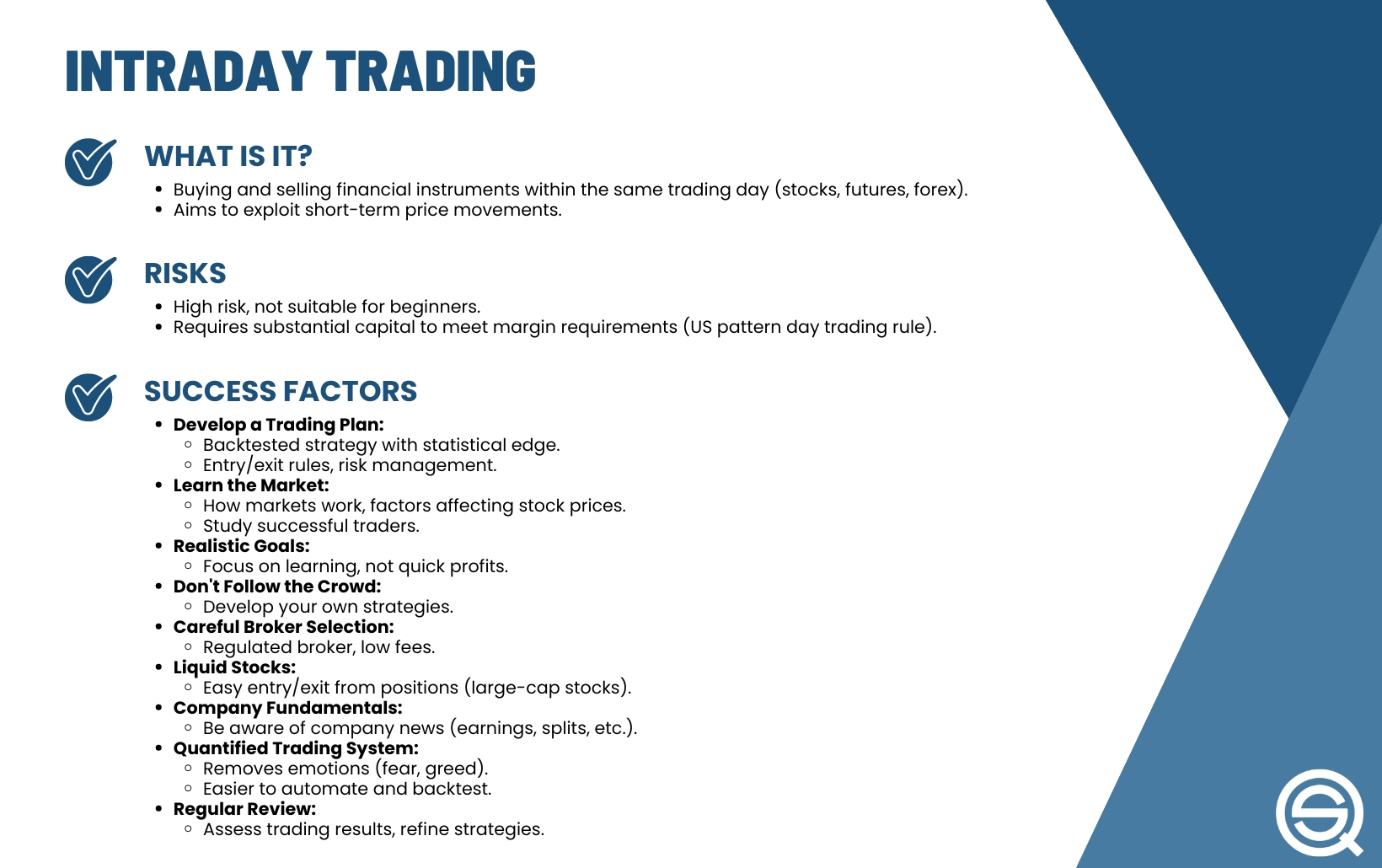Did you know that the average day trader spends more time staring at charts than a barista at a coffee shop? Choosing the right day trading strategy is crucial for success in the fast-paced trading world. This article dives into the main types of day trading strategies and how to assess your risk tolerance. You'll learn about the factors influencing strategy selection, the importance of market volatility, and the significance of a solid trading plan. We'll also explore the role of technical analysis, essential indicators, and emotional management in trading. Plus, discover common mistakes to avoid and how to adapt your strategy to changing market conditions. With insights on backtesting, news event incorporation, and the best platforms for execution, you’ll be well-equipped to develop a personalized day trading strategy. Let DayTradingBusiness guide you through these critical aspects to enhance your trading journey.
What are the main types of day trading strategies?
The main types of day trading strategies include:
1. Scalping: Focuses on making small profits from numerous trades throughout the day, often holding positions for just seconds to minutes.
2. Momentum Trading: Involves buying stocks that are trending strongly in one direction, capitalizing on the momentum for quick gains.
3. Reversal Trading: Looks for price reversals at support or resistance levels, betting against the current trend.
4. Breakout Trading: Targets stocks that break through key support or resistance levels, aiming to profit from the subsequent price movement.
5. News-Based Trading: Trades based on news releases or events that can cause significant price movements.
Choose a strategy that aligns with your risk tolerance, market knowledge, and trading style.
How do I assess my risk tolerance for day trading?
To assess your risk tolerance for day trading, start by evaluating your financial situation. Consider how much capital you can afford to lose without impacting your lifestyle. Reflect on your emotional responses to losses; can you handle rapid fluctuations without panic? Identify your investment goals and how much time you can dedicate to trading daily. Use a risk assessment questionnaire or tools to quantify your comfort level with various risks. Finally, practice with a demo account to gauge your reactions in real-time scenarios before trading with real money.
What factors should I consider when selecting a day trading strategy?
Consider your risk tolerance, capital availability, and time commitment. Assess your trading style—whether you prefer scalping, momentum, or range trading. Analyze market conditions and choose strategies that align with current volatility. Look at your technical analysis skills; some strategies require more chart reading than others. Evaluate your emotional resilience; high-pressure strategies may not suit everyone. Finally, backtest your chosen strategy to gauge effectiveness before committing real funds.
How can I evaluate the effectiveness of a day trading strategy?
To evaluate the effectiveness of a day trading strategy, follow these steps:
1. Backtesting: Use historical data to simulate trades based on your strategy. Analyze the results for profitability and consistency.
2. Performance Metrics: Track key metrics like win rate, average gain per trade, maximum drawdown, and risk-reward ratio.
3. Trade Journal: Maintain a detailed journal of your trades. Record entry and exit points, reasons for trades, and outcomes to identify patterns.
4. Risk Management: Assess how well your strategy manages risk. Ensure stop-loss and take-profit levels align with your risk tolerance.
5. Market Conditions: Test your strategy across different market conditions (bull, bear, volatile) to see how it holds up.
6. Adaptability: Evaluate how easily your strategy can adjust to changing market trends. A good strategy should be flexible.
7. Peer Review: Share your strategy with other traders for feedback and insights that might reveal blind spots.
By applying these methods, you can effectively gauge the viability of your day trading strategy.
What role does market volatility play in day trading strategies?
Market volatility is crucial for day trading strategies because it creates price movements that traders can exploit. High volatility often leads to larger price swings, increasing the potential for profit within a short time frame. Traders typically seek volatile stocks or assets to maximize their chances of executing successful trades. Strategies like scalping or momentum trading thrive in such environments, as they capitalize on rapid price changes. Conversely, low volatility may lead to smaller price movements, making it harder to achieve significant gains, which is why traders often adjust their strategies based on current market conditions.
How do I determine the best time frame for day trading?
To determine the best time frame for day trading, consider your trading style, risk tolerance, and market conditions.
1. Scalping: If you prefer quick trades, use a 1-minute to 5-minute chart. This allows for rapid entries and exits.
2. Intraday Trading: For more strategic moves, a 15-minute to 30-minute chart works well. This balances quick decisions with trend analysis.
3. Swing Trading: If you hold positions longer, look at hourly charts. This helps capture bigger price movements over the day.
Assess your ability to monitor trades and your comfort with volatility. Test different time frames in a demo account to find what aligns with your strategy and personality.
What are the advantages of using technical analysis in day trading?
Using technical analysis in day trading offers several advantages:
1. Trend Identification: It helps traders spot market trends quickly, allowing for timely entries and exits.
2. Price Patterns: Recognizing patterns like head and shoulders or flags can signal potential price movements.
3. Indicators and Signals: Traders can utilize indicators like MACD or RSI to make informed decisions based on market momentum.
4. Risk Management: Technical analysis aids in setting stop-loss and take-profit levels, enhancing risk control.
5. Market Psychology Insight: Analyzing volume and price action reveals trader sentiment, guiding decisions.
6. Short-Term Focus: It aligns perfectly with day trading’s fast pace, enabling quick trades based on real-time data.
These advantages make technical analysis a valuable tool for day traders looking to maximize their profits.
How important is a trading plan in day trading strategy selection?

A trading plan is crucial in day trading strategy selection. It defines your goals, risk tolerance, and specific entry and exit points. A solid plan helps you stay disciplined, reduces emotional decision-making, and improves consistency. Without it, you risk impulsive trades and significant losses. Prioritize developing a clear, actionable trading plan to guide your strategy effectively.
What indicators should I use for day trading strategies?
For day trading strategies, consider using these indicators:
1. Moving Averages: Use short-term moving averages (like the 5 and 20-day) to identify trends and potential buy/sell signals.
2. Relative Strength Index (RSI): This momentum oscillator helps identify overbought or oversold conditions, guiding entry and exit points.
3. Bollinger Bands: These can indicate volatility and potential price reversals; look for price touching the bands for trading signals.
4. Volume: High trading volume confirms trends and signals strength, making it crucial for validating your trades.
5. MACD (Moving Average Convergence Divergence): This indicator helps spot changes in momentum and trend direction, assisting in timing your trades.
Combine these indicators to develop a robust day trading strategy tailored to your style.
How can I manage my emotions while day trading?

To manage your emotions while day trading, establish a clear trading plan with defined entry and exit points. Stick to your strategy and avoid impulsive decisions driven by fear or greed. Use stop-loss orders to minimize losses and take breaks to maintain mental clarity. Keep a trading journal to reflect on your trades and emotional state, helping you identify patterns in your behavior. Practice mindfulness techniques, like deep breathing or meditation, to stay calm under pressure.
What are common mistakes to avoid when choosing a day trading strategy?
1. Ignoring Personal Risk Tolerance: Choose a strategy that aligns with your comfort level regarding risk.
2. Lack of Research: Don’t skip thorough research on potential strategies and market conditions.
3. Overtrading: Avoid the temptation to make too many trades in a day; focus on quality over quantity.
4. Neglecting a Trading Plan: Always have a clear plan with entry and exit points; winging it leads to losses.
5. Failing to Adapt: Markets change; don’t stick to one strategy if it’s no longer effective.
6. Emotional Trading: Avoid letting emotions drive your decisions; stick to your strategy.
7. Underestimating Costs: Be aware of commissions and fees that can eat into profits.
8. Ignoring Market News: Stay updated on economic events that can impact your trades.
9. Not Backtesting: Test your strategy on historical data before applying it live.
10. Disregarding Stop Losses: Always use stop losses to manage risk and protect your capital.
Learn about Common Mistakes in Day Trading Scalping and How to Avoid Them
How do I adapt my day trading strategy to changing market conditions?
To adapt your day trading strategy to changing market conditions, first, stay informed about market news and trends. Analyze volatility; increase position sizes in volatile markets and reduce them during low volatility. Adjust your technical indicators based on current market behavior—use momentum indicators in trending markets and oscillators in sideways markets. Incorporate risk management by setting tighter stop-loss orders in unpredictable conditions. Regularly review and tweak your strategy based on performance; if a method isn’t working, be ready to pivot. Lastly, maintain flexibility; the most successful traders can quickly change their approach as conditions evolve.
Learn about How to Develop Your Own Scalping Strategy for Day Trading
How Can Beginners Choose the Best Day Trading Strategy?
To choose the right day trading strategy, assess your risk tolerance, trading style, and time commitment. Research various strategies like scalping, momentum trading, or swing trading. Test potential strategies with paper trading to evaluate effectiveness. Analyze market conditions and select a strategy that aligns with your goals and skills.
Learn more about: Day Trading Strategies for Beginners
Learn about How to Choose the Best Options for Day Trading
What is the significance of backtesting in day trading strategies?

Backtesting is crucial in day trading strategies because it allows traders to evaluate the effectiveness of a strategy using historical data. By simulating trades based on past market conditions, traders can identify potential profits and losses. This process helps refine strategies, manage risk, and build confidence before committing real capital. Ultimately, backtesting informs decision-making, ensuring strategies are grounded in data rather than speculation.
How can I incorporate news events into my day trading strategy?
To incorporate news events into your day trading strategy, follow these steps:
1. Stay Informed: Monitor financial news outlets, economic calendars, and social media for real-time updates on market-moving events.
2. Identify Key Events: Focus on earnings reports, economic data releases, and geopolitical developments that can impact stock prices.
3. Set Up Alerts: Use trading platforms to set alerts for major news events that may affect your chosen stocks or sectors.
4. Analyze Impact: Assess how news can influence market sentiment and volatility; for example, positive earnings might lead to bullish momentum.
5. Use Technical Analysis: Combine news with technical indicators to find entry and exit points, ensuring you have a plan for both scenarios.
6. Practice Risk Management: Adjust your stop-loss and take-profit levels based on anticipated market reactions to news events.
7. Review and Adapt: After trading on news events, analyze your outcomes to refine your strategy for future trades.
By integrating these elements, you can effectively utilize news events to enhance your day trading strategy.
Learn about How to Stay Updated on Crypto Market News for Day Trading
What platforms are best for executing day trading strategies?
The best platforms for executing day trading strategies include:
1. TD Ameritrade – Offers advanced tools and research.
2. E*TRADE – User-friendly interface with robust trading options.
3. Interactive Brokers – Low commissions and extensive global market access.
4. Charles Schwab – Strong trading platform with educational resources.
5. Fidelity – Comprehensive research tools and no commission fees on stocks.
Choose a platform based on your specific trading needs, such as fees, tools, and asset availability.
Learn about What Are the Best Day Trading Scalping Strategies?
How can I develop my own personalized day trading strategy?
To develop your own personalized day trading strategy, start by defining your goals and risk tolerance. Analyze different trading styles like scalping, momentum trading, or swing trading to see what fits you best. Use technical analysis to identify patterns and indicators that resonate with your trading style. Create a clear entry and exit plan, including stop-loss and take-profit levels. Backtest your strategy using historical data to refine it. Finally, keep a trading journal to track your performance and make adjustments as needed.
Learn about How to Develop Your Own Scalping Strategy for Day Trading
Conclusion about How to Choose the Right Day Trading Strategy
Choosing the right day trading strategy is crucial for success in the fast-paced trading environment. By understanding various strategies, assessing your risk tolerance, and considering key factors such as market volatility and technical analysis, you can make informed decisions. Additionally, maintaining a solid trading plan and managing emotions are essential for consistent performance. Remember to continuously evaluate and adapt your strategy based on market conditions and backtesting results. With the right approach, supported by insights from DayTradingBusiness, you can enhance your trading journey and achieve your financial goals.
Learn about How to Choose the Right Futures Contracts for Day Trading